healthy food tip and recipe
Today's Recipe
If you don't know what to serve for dinner tonight ...
You can have a complete meatless meal in a matter of minutes when
you add this Asian-inspired broccoli dish to your Healthiest Way of
Eating.
Asian-Flavored Broccoli with Tofu
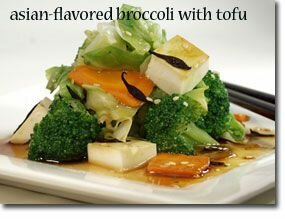 Prep and Cook Time:
Prep and Cook Time: 15 minutes
Ingredients:
- 1 lb broccoli, florets cut into quarters
- 2 medium carrots, sliced thin
- 8 oz tofu cut into cubes
- 3 TBS extra virgin olive oil
- 2 tsp lemon juice
- 2 medium cloves garlic
- 1 TBS soy sauce
- 2 TBS grated ginger
- 1 TBS rice vinegar
- red pepper flakes to taste
Directions:
- Fill bottom of steamer with 2 inches of water.
- While steam is building up in steamer, cut broccoli florets
into quarters and let them sit for 5-10 minutes to enhance their health
promoting properties. Also cut stems into 1/4-inch pieces.
- Press or chop garlic and let sit for at least 5 minutes.
- Add tofu and sliced carrots to steamer and steam for 2 minutes.
- Add broccoli and steam for 5 more minutes.
- Toss with rest of ingredients.
Optional: To mellow the flavor of garlic, add garlic to steamer for the last 2 minutes of steaming.
Serves 2
Printer Friendly Version of
Asian-Flavored Broccoli with Tofu
In-Depth Nutritional Profile for
Asian-Flavored Broccoli with Tofu
Healthy Food Tip
Is sushi healthy? If so, which are healthiest?
There are many different types of sushi, which are made with a
wide variety of ingredients, including different types of vegetables,
sea vegetables, and seafood. The basic ingredient for all sushi is rice;
therefore, the other ingredients you choose to have on your sushi will
determine its comparative nutritional value.
Varieties of sushi that include only rice and vegetables offer
nutrient-rich vegetarian options for sushi. For example, many
restaurants offer sushi made with shiitake mushrooms, avocado, cucumber,
burdock, umeboshi plum paste (a pickled plum suggested to have stomach
health-promoting properties), and natto (a fermented soybean food that
contains isoflavones and has been found to help promote bone health).
Other varieties of sushi are wrapped in nori, a type of sea
vegetable. Sea vegetables are rich in nutrients, including minerals
(such as iodine) and phytonutrient lignans.
Before we talk about the raw fish issue, it's worth adding in a
distinction about the terms "sushi" and "sashimi." In Japanese, the word
"sushi" refers to seasoned rice, not to fish at all. As I mentioned
earlier, sushi may or may not contain fish. If it contains fish, the
fish might or might not be raw. If the fish isn't raw, it may actually
have been cooked. More likely, however, the non-raw fish in sushi will
have been marinated in a liquid that includes an acidic ingredient like
vinegar or lime juice. The term "sashimi" refers directly to sliced raw
fish, often served with soy sauce and wasabi (green horseradish).
When eating sashimi, or sushi topped with raw fish, a good
approach is to enjoy it at a responsible restaurant, which has high
quality purchasing and preparation practices. This is important so that
you can reduce your risk of eating contaminated raw fish (which
obviously is not healthy). Some of the health hazards connected with raw
fish involve parasitic worms like tapeworm, flatworm, or roundworm.
Roundworm (
Anisakis simplex) may be the most problematic of the
three parasites. If fish has been commercially frozen for at least three
days at a temperature of 4°F (-16°C), all of these worms-and their
larvae-will be killed, rendering the fish more safe. (Your freezer at
home most likely cannot reach a temperature this low.) It's also good to
eat it with some wasabi, which has traditionally been revered for its
antimicrobial properties.
There are many types of fish that you can find in a sushi
restaurant that contain great concentrations of nutrients. Omega-3-rich
fish such as salmon, tuna, and mackerel are popular sushi options (don't
forget that yellowfin or ahi tuna contains less mercury than albacore
tuna). Pregnant woman and people with compromised immune systems may not
want to take the risk of eating raw fish sushi at all and should
discuss this with their healthcare provider.
While all types of sushi can be healthy, you will receive more
vitamins from sushi made with vegetables, more minerals from sushi that
is wrapped in seaweed, and more protein (and omega-3s, depending on the
type of fish) from sushi topped with fish.
References:
Ikeda Y, Iki M, Morita A, et al. Intake of Fermented Soybeans,
Natto, Is Associated With Reduced Bone Loss in Postmenopausal Women:
Japanese Population-Based Osteoporosis (JPOS) Study. J Nutr.
2006;136(5): 1323-8.
Katsuyama H, Ideguchi S, Fukunaga M, et al. Promotion of Bone
Formation by Fermented Soybean (Natto) Intake in Premenopausal Women. J
Nutr Sci Vitaminol (Tokyo). 2004;50(2): 114-20
Katsuyama H, Ideguchi S, Fukunaga,M, et al.Usual Dietary Intake
of Fermented Soybeans (Natto) Is Associated With Bone Mineral Density in
Premenopausal Women." J Nutr Sci Vitaminol (Tokyo) . 2002;48(3):
207-15.
Thompson LU, Robb P, Serraino M. Mammalian Lignan Production From Various Foods. Nutr Cancer.1991; 16(1):43-52.
For more information this topic, see:


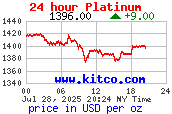
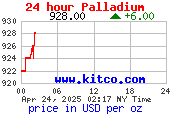
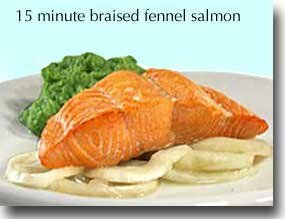


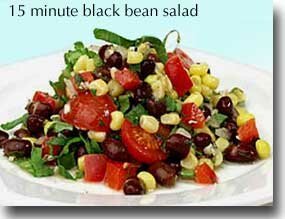







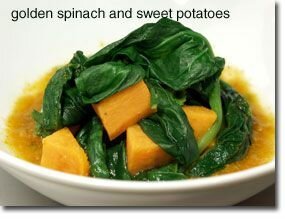



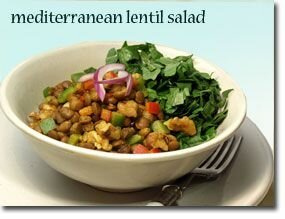
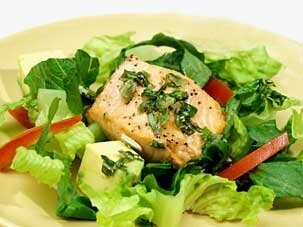

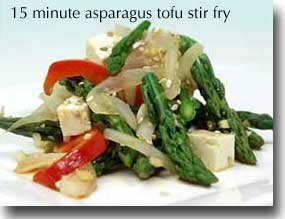



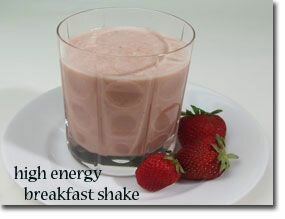
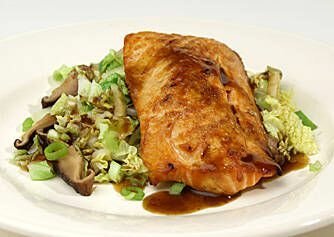




 CMI Gold & Silver President, Bill Haynes, is featured on the Weekly
Metals Wrap Up online radio program with King World News. Tune in each
week for insight and commentary on the metals market.
CMI Gold & Silver President, Bill Haynes, is featured on the Weekly
Metals Wrap Up online radio program with King World News. Tune in each
week for insight and commentary on the metals market.
